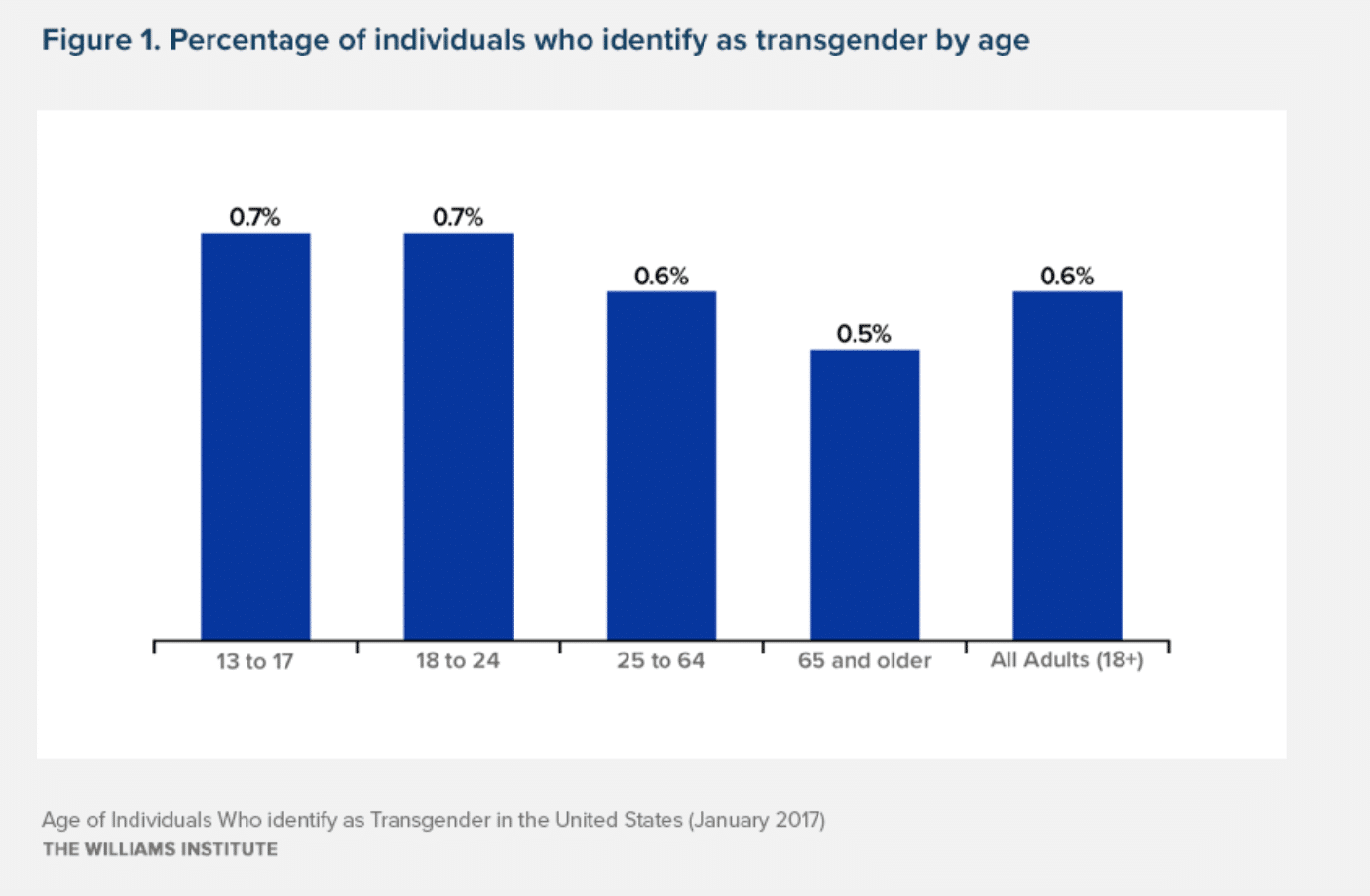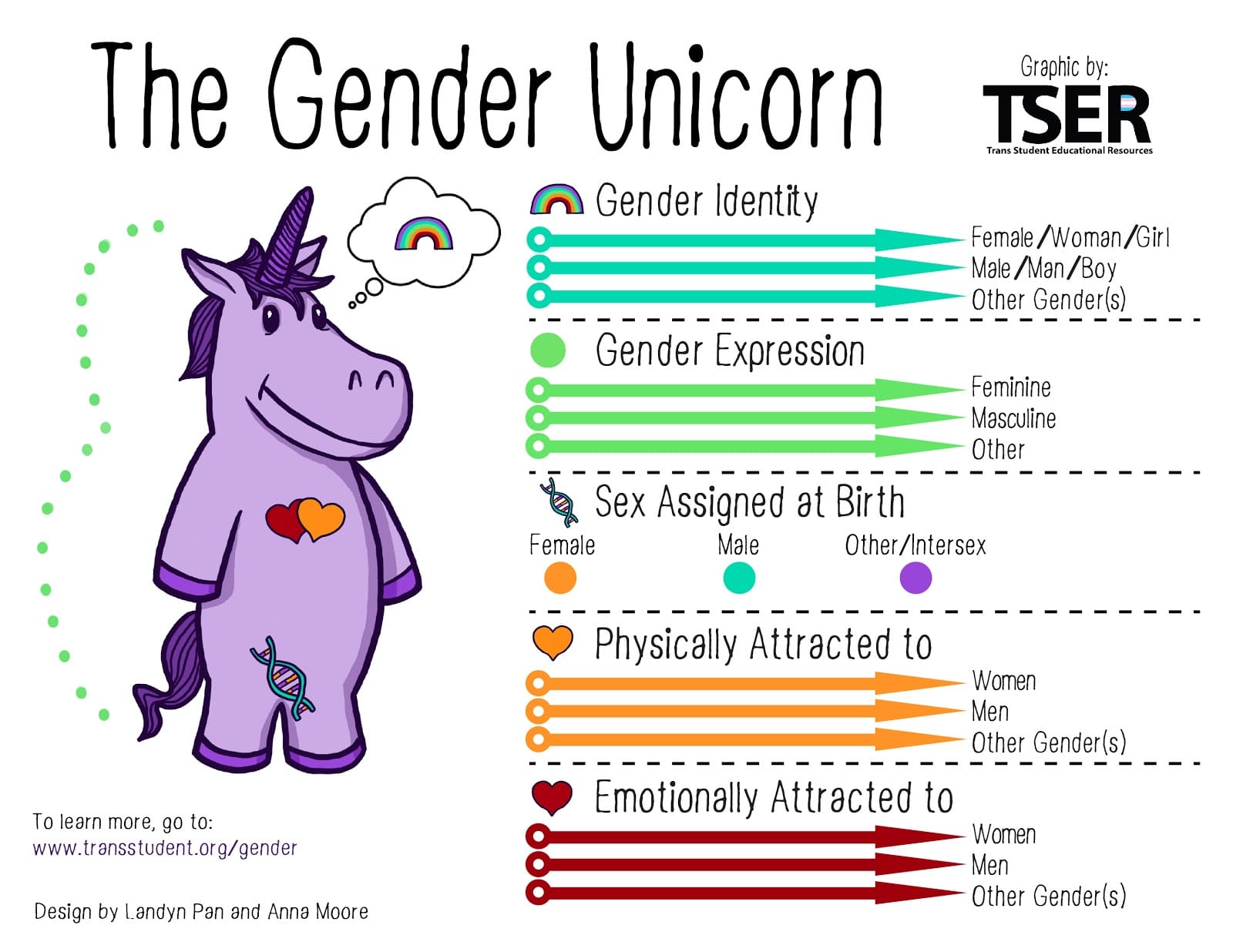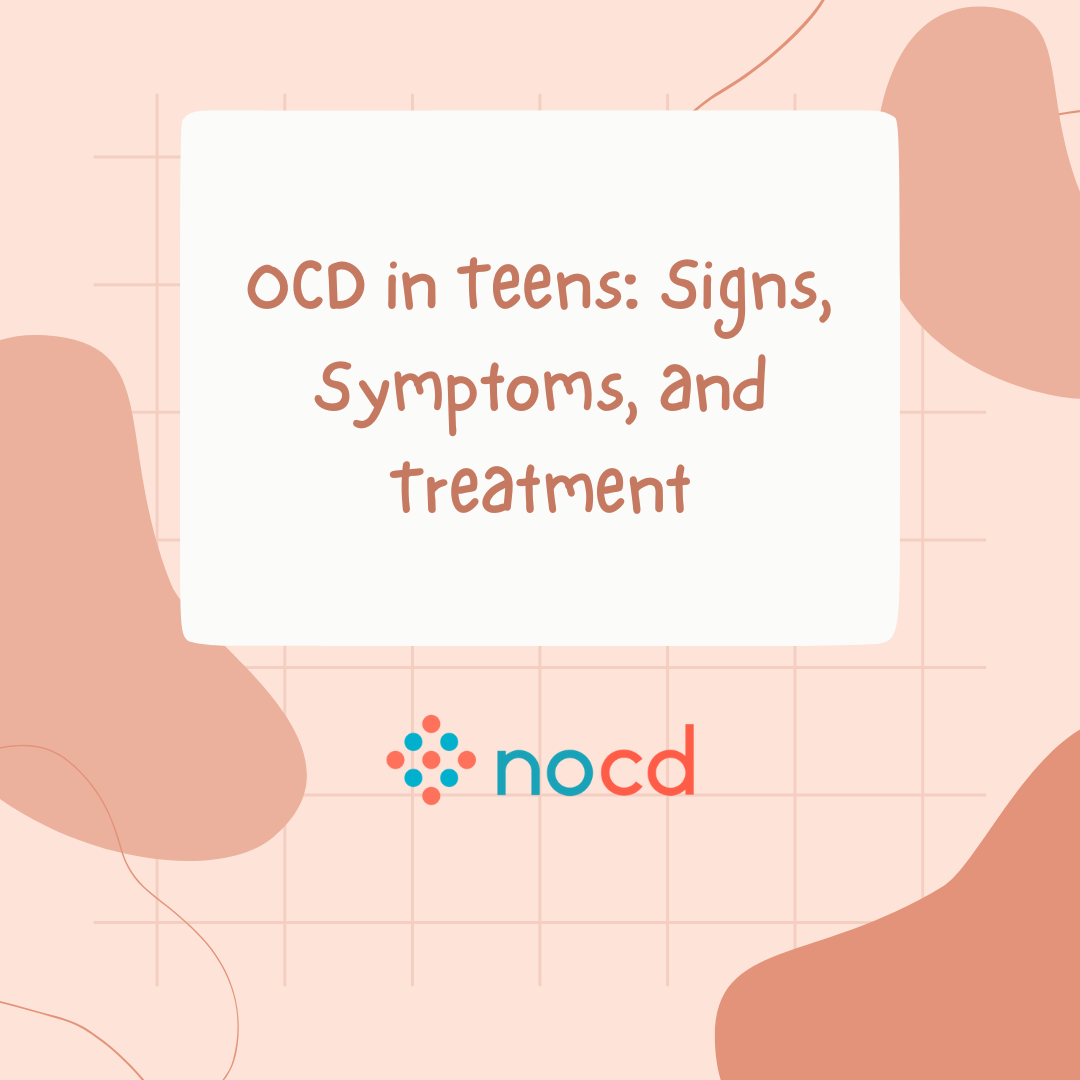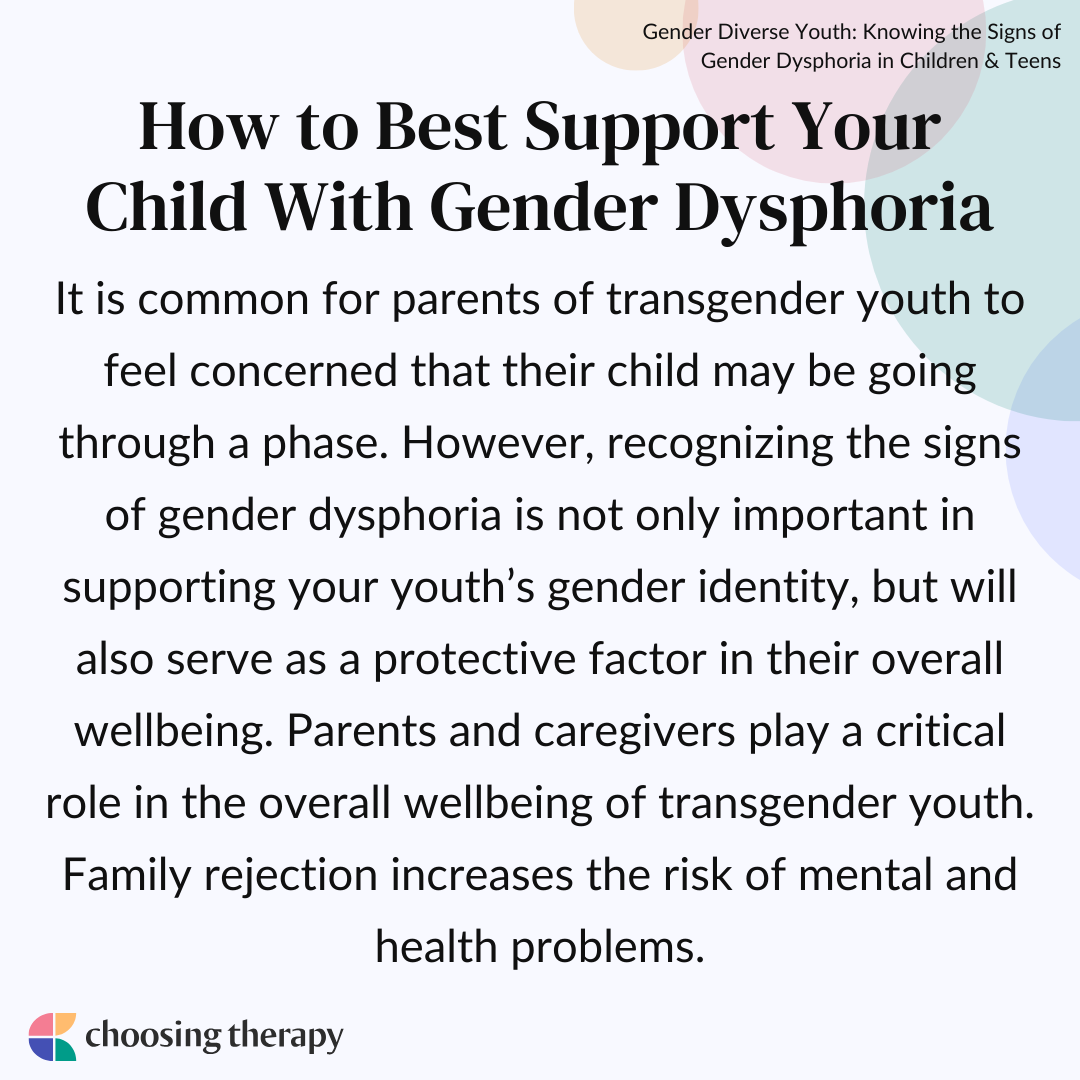Children and adolescents with gender dysphoria will usually be persistent in their desire to be seen and treated as the gender they align with versus their designated gender at birth. Children who may experience gender dysphoria will often want to be seen and treated as the gender identity they most align with.
As a caregiver raising a transgender or gender diverse child, the attitude and approach you take toward supporting their exploration and understanding of their gender will aid in their overall adjustment and identity development.
Are you obsessively asking yourself “Am I a good parent?” Most parents occasionally ask themselves the question. However, if you are constantly worried about being a good parent and cannot control your fears, you might have OCD. Learn More
Accepting Your Child’s Gender Identity
Oftentimes, when parents and caregivers learn their child is gender diverse (their child expresses their gender differently from the one they were born with), the fears they experience are mixed with the myths and stereotypes that are embedded in our culture regarding gender. However, these myths and stereotypes are dangerous and lead to negative messaging for all individuals, particularly trans and gender diverse youth.1
Consider the following additional questions as you reflect on gender diversity:3
- How did you express your gender as a child? As an adolescent?
- What messages did you hear about gender growing up that were disempowering or not affirming?
- What are additional areas related to gender diversity that you would like to know more about in relation to your experiences of gender growing up?
As a parent or caregiver of a gender diverse child, it is important to reflect on these questions because you may or may not realize how you are modeling unhelpful or shameful messages regarding gender to your child. It will also help you explore how you can be more affirming as a parent of a gender diverse youth.
Definition of Sex- & Gender-Related Terms
Here are some basic terms you should know as a parent to understand gender in supporting your child:
- Gender is a person’s innermost concept of self as male, female, a combination of both, or neither; it is more of a spectrum, with all individuals expressing and identifying with varying degrees of both masculinity and femininity.2
- Gender identity involves a complex makeup of sociocultural factors reflecting a person’s internal sense of oneself—in other words, what gender a person knows themselves to be and how they want others to see them as.
- Sex: Gender is different from sex, in that sex [sex assigned at birth] typically refers to how a newborn is determined male, female, or intersex based on their sex organs and/or secondary sex characteristics. Although social expectations of gender are typically mirrored onto the sex a person is assigned at birth, gender is not limited to or defined by the anatomical and/or biological aspects of a person.3
- Cisgender refers to a person whose gender identity aligns with expectations typically associated with their sex assigned at birth; for example, if you are born male (i.e., with a penis) and your gender identity (i.e., innermost concept of self) is also male.
- Transgender is considered an umbrella term that comprises all individuals whose gender identity does not conform to expectations based on their sex assigned at birth;4 transgender people identify along the gender spectrum from masculinity to femininity, but also identify as a gender that is different from the one they were assigned at birth.2
- Gender nonconforming, gender variant, gender expansive, gender creative, and gender diverse are mostly interchangeable terms that describe youth who explore and express their gender along the spectrum that is different than the sex and gender they were assigned at birth; however, it does not necessarily mean the child identifies as transgender or experiences gender dysphoria.
- Gender ≠ sexual orientation: Sexual orientation refers to a person’s sexual and/or romantic attraction to people of the same gender, different genders, both, or neither. It is common to see many children who later on identify as lesbian, gay, or bisexual adopt gender diverse behaviors. Everyone, including cisgender and transgender people, have both sexual orientation and gender identity, which means a trans person can identify as straight, gay, lesbian, bisexual, queer, and/or any other sexual identity.
Charlie Health - Therapy Once Per Week Isn’t Always Enough Charlie Health’s virtual mental health program includes curated peer groups, individual therapy, and family therapy for teens and young adults with serious mental health issues. Insurance accepted. Learn More
Is My Child Gender Nonconforming or Transgender?
It is common for children to engage in gender nonconforming behaviors throughout their development, such as in their play or in their dress. You may find that little boys will be curious about playing with dolls, or little girls will want to dress up in boys clothing, and vice versa. This behavior is normal and a common part of childhood development. It does not necessarily mean they will identify as transgender.
With that being said, if you observe this behavior continuously, it may mean that your child is transgender and may experience gender dysphoria. Generally, determining whether a child is transgender versus gender nonconforming is based on their consistent, insistent, and persistent desire to be seen and treated as the gender they align with that is typically different from the gender they were assigned at birth.6,7,8
For example, if you find that your child occasionally dresses up in clothes or plays with toys that are typically associated with the opposite gender, it does not necessarily mean your child is transgender. However, if your child repeatedly insists over the course of several months that they are a different gender than their designated one at birth, then they are most likely transgender.
At What Age Does Gender Diversion Typically Happen?
Transgender children will begin to recognize their gender is different from the one they were assigned at birth as early as 2-4 years.4,6 This can persist into their later stages of childhood and adolescence, and is conveyed through their identity, expression, or both.7,8
What Is Gender Dysphoria?
Gender dysphoria refers to the persistent emotional and psychological distress a child, adolescent, or adult experiences due to the disconnect between their internal sense of who they are and their designated sex at birth.10,11 Gender dysphoria is not considered pathological or a mental illness that can be cured. Instead, the diagnosis reflects the ongoing internal mismatch individuals experience between their gender identity and designated sex at birth.
Helping and medical professionals refer to this experience as gender dysphoria because it can cause a lot of pain and emotional distress. People who identify as transgender as well as gender nonconforming or non-binary can report dysphoria and will seek support to navigate their experiences.4
Signs of Gender Dysphoria in Children & Teens
Gender dysphoria can look differently depending on the age of the child, but almost always involves a persistent insistence that they are a different gender than the sex they were assigned at birth.
Young Children
At an early age, children become aware of their gender identity. Children as early as 2-4 years are typically aware of their gender and able to express it to the adults around them. It is normal for children to explore their genitals and engage in all forms of gender expression. Having said that, transgender children will begin to persistently insist that they are treated and referred to by the gender they align with.
School-Aged Children
School-aged children (5-9 years old) will continue to demonstrate this persistent identification, and may frequently become upset when forced to abide with rules that limit their gender expression. These children are at increased risk for distress, which can manifest in bodily harm, poor school performance, anxiety, depression, or even suicidal behaviors.
Although not all gender diverse children will experience dysphoria, children who do will frequently and persistently engage in the following behaviors:6,12,13
- Consistent statements they are the opposite gender
- Persistent desire to “get rid” of their genitals
- Feelings of disgust and embarrassment by their body
- Consistent rejection of typically gendered behavior
- Express rejection or trauma from the bodily changes that occur during puberty
Adolescents
During adolescence, it is also normal for teenagers to experiment with their gender expression. For example, youth may wear clothing or style their hair in a way that is typically associated with the opposite gender. Gender diverse teens do not always experience gender dysphoria. However, for those that do, puberty can exacerbate gender dysphoria for transgender youth, as the mismatch between their gender identity and designated sex intensifies.
Teens who experience gender dysphoria will persistently and consistently exhibit these behaviors:1,9,15
- Strong feelings that their gender identity differs from their designated sex at birth
- Frequent statements that they feel unsure about their gender
- Insist on being referred to by a different name and use a different pronoun like he, she, or they
- Persistent desire to “get rid of” the physical signs of their sex or have those of a different sex—for example, your teen might say they wish to use medication to make their body more feminine or masculine appearing
Other signs of gender dysphoria in teens include:
- Avoidance or aversion toward going to school
- Displaying symptoms of anxiety, depression, and/or other co-occurring mental health issues
- Engaging in self-harm and/or increase in suicidal behaviors
Are Gender Diverse Youth More Likely to Develop Mental Health Conditions?
Research suggests that gender diverse youth, including those who identify as transgender, non-binary, or genderqueer, are at higher risk for developing certain mental health conditions compared to their cisgender counterparts (individuals whose gender identity matches the sex they were assigned at birth). These mental health challenges are often a result of the unique stressors and discrimination faced by gender diverse individuals. It’s important to note that individual experiences can vary widely, and not all gender diverse youth will experience mental health issues.
Studies have shown that gender diverse youth have higher rates of depression, anxiety, self-harm, and suicidal ideation compared to their cisgender peers. Supportive environments, including affirming families, schools, and communities, as well as access to mental health services that are sensitive to the unique needs of gender diverse individuals, can significantly mitigate these risks.1
Popular Options For Teen Mental Health
Talkspace – Online Therapy For Teens. A space for your teen to talk about what’s going on, develop coping skills, and start feeling better. Covered by most major insurance plans. Get Started
Charlie Health – Therapy Once Per Week Isn’t Always Enough. Charlie Health’s virtual mental health program includes curated peer groups, individual therapy, and family therapy for teens and young adults with serious mental health issues. Insurance accepted. Learn More
Equip – Eating Disorder Treatment That Works – Delivered At Home. Are you worried that your child has an eating disorder? With the right treatment, lasting recovery is 100% possible. Equip offers virtual evidence-based care, so you can help your loved one recover at home. We take insurance! Get a Consultation
Gender Dysphoria Treatment for School-Aged Children
Typically at this stage of development, gender-affirming medical professionals and therapists will support the pre-pubescent child in socially transitioning to support their gender identity. Social transition involves referring to the child by their chosen name and pronouns, and changing their dress to align with their gender identity.
This process typically involves the parents/caregivers, school, and other organizations where the child receives care and support.14 It is common for parents to feel worried or fear how their child will be treated, such as bullying or being misgendered. Helping professionals can support the family by exploring and understanding any emotions or experiences incurred by the social transition process.
Generally, the social transition process has proven to significantly reduce emotional and psychological distress experienced by transgender children and enhance their overall wellbeing. It is also a reversible process so that, if the child later desires to transition back or to another gender, that’s still entirely possible with no repercussions. Allowing the child to explore and understand their gender will aid in their overall identity development and most often children rarely detransition.4
Gender Dysphoria Treatment for Teens
Treatment for gender dysphoria in teens typically includes puberty blockers, hormone therapy, and potentially gender-affirming surgeries, especially for people over 18 years of age.
GnRH Treatment
During earlier stages of puberty (i.e., 8-14 years), gender-affirming medical professionals will follow the the Endocrine Society and World Professional Association for Transgender Health standards of care in advocating for the use of puberty blockers to delay the onset of irreversible bodily changes that occur during puberty.16,17
These hormones are called gonadotropin-releasing hormone (GnRH) agonists and allow for youth and their families to have more time to explore and understand their gender before making more permanent decisions.4 They are also reversible, meaning that if the child desires to detransition or transition to another gender, they can. Helping professionals will support the youth and their family in developing the emotional and cognitive skills to make further decisions regarding their transition process.
Gender-Affirming Hormone Treatments
During later stages of puberty (i.e., 14-18 years), masculinising and/or feminizing hormones will be explored in further aiding the medical transition of the transgender youth. The ES suggests that youth begin cross-sex hormone by the age 16.16 Although, in many countries, like the United States, gender-affirming medical professionals will suggest starting these medications as early as age 12-14 so youth can transition to their affirmed gender and experience puberty along with their peers.
What to Know Going In
There are several considerations for this process that can be discussed with your medical professional. For example, for youth who are already on hormone blockers, there is concern about achieving the appropriate bone density. Youth and their families can coordinate with their medical professional to determine if hormone blockers and cross-sex hormones can be used conjointly, or if the youth should first stop the hormone blockers and then begin the masculinizing and/or feminizing hormone replacement.14,16
During this time, helping professionals will help youth and their families explore their goals, possible benefits and risks of medical transition, such as fertility, costs, and self-care plan.
Gender-Affirming Surgeries
Gender-affirming surgeries, also known as gender confirmation surgeries or gender reassignment surgeries, are medical procedures that help individuals align their physical characteristics with their gender identity. The eligibility and availability of these surgeries depend on various factors, including the individual’s age, overall health, mental and emotional readiness, and the guidelines and regulations of the country or region where the procedures are sought. Age requirements vary, but individuals often need to be legally considered adults (18 years old or older) to undergo these procedures.
Mental health professionals may assess the individual’s mental and emotional well-being to ensure they are psychologically prepared for the surgery and the associated changes. Some people may be required to undergo hormone therapy and live in their affirmed gender for a certain period of time before being eligible for surgery. Informed consent is a critical aspect of gender-affirming care. Individuals are typically required to understand the risks, benefits, and potential outcomes of the surgery before giving their consent.
Statistics of Transgender Youth in the United States
The Williams Institute found that 150,000 youth ages 13-17 identify as transgender.18 Although this is considered the youngest age group in the study, it comprises the highest estimated group of individuals who identify as transgender in the United States. In another report, trans youth are more likely than their LGBTQ+ counterparts to experience bullying, family rejection, homelessness, and physical and sexual abuse at higher rates.19
This is exacerbated for Black and Brown trans youth who are more likely to be discriminated against. It is also found that Black and Brown trans youth are overrepresented in the juvenile justice system facing greater structural racism, LGBTQ+ stigma, and violence than their peers.20
If trans youth are supported, embraced, and accepted by their families, research shows that they go on to having greater quality of life as adults. This support is considered a protective factor against bullying, stigma, and discrimination within the larger society and aids in the overall wellbeing of the trans youth.21

Source: Williams Institute
How to Best Support Your Child With Gender Dysphoria
It is common for parents of transgender youth to feel concerned that their child may be going through a phase. However, recognizing the signs of gender dysphoria are not only important in supporting your youth’s gender identity, but will also serve as a protective factor in their overall wellbeing. Parents and caregivers play a critical role in the overall wellbeing of transgender youth. Family rejection increases the risk of mental and health problems.21
Gender dysphoria is quite distressing for those who experience it. That is an understatement, really! Transgender youth often feel that they need to hide their gender identity in fear of being rejected or judged by their loved ones. Most often, youth will internalize the negative messaging associated with their gender if parents and caregivers are not careful in approaching them with support and acceptance.
LGBTQ+ youth whose families were highly rejecting were:
- 8 times more likely to have attempted suicide
- 6 times more likely to report higher levels of depression
- 3 times more likely to use illegal drugs
- 3 times more likely to be at high risk for contracting HIV and other sexually transmitted diseases
For caregivers and families of LGBTQ+ youth, being more accepting and less rejecting of your child will lead to better outcomes for them. The most important thing we can do for our LGBTQ+ youth is believing that they can have a happy life as an adult. There are several ways we can support our children.
Other ways to help your child cope with their gender dysphoria include:
- Talk with your child—listen to understand their thoughts and emotions with nonjudgement
- Connect your child with LGBTQ+ resources
- Search for a gender-affirming therapist and medical health professionals to coordinate care for your child
- Be patient—your child may be exploring their gender and/or trying to communicate their dysphoria
- Ask your child how they want to be addressed—if you make a mistake with their chosen name and/or pronoun, that is okay, correct your mistake and move on
- Support your child’s identity even if it makes you feel uncomfortable
- Tell your child that you love and support them
- Advocate for your child—meet with teachers, the principal, school counselors, and/or other stakeholders to ensure a successful school year
- Join your local PFLAG chapter
- Continue your gender education and learning

Source: TSER 2016
The Transgender Student Educational Resources created the above Gender Unicorn graphic to help individuals understand their gender and sexual identity.5 Consider filling out the Gender Unicorn as a starting point in understanding your child’s gender identity. You can fill it out by placing an X on each line reflecting your level of alignment with each of the areas (i.e., gender identity, gender expression, sex assigned at birth, physical and romantic attraction).
Additional Resources
To help our readers take the next step in their mental health journey, Choosing Therapy has partnered with leaders in mental health and wellness. Choosing Therapy is compensated for marketing by the companies included below.
Neurological Testing
Neuropsychological Testing For Children (including evaluations for Autism Spectrum Disorder, ADHD and Learning Disorders) Get answers in weeks, not months. Bend Health provides a complete report with in-depth findings, review with your schools, and a clinical diagnosis (if applicable). Learn more
Online Therapy & Coaching (ages 1 -17)
Bend Health is a virtual mental healthcare provider caring for kids, teens, and their families. Many insurance plans are accepted. Learn More
Online Therapy
TeenCounseling (ages 13 -19) – Help your child thrive with professional counseling. Get matched with a licensed therapist who specializes in teens. Discuss your child’s issues and situation. When you approve, the therapist is connected with your child. The therapist interacts with your child over text, phone, and video. Starting for as little as $65 per week. Get Started
DBT-Focused Therapy For Teens
Charlie Health’s virtual mental health program includes curated peer groups, individual therapy, and family therapy for teens and young adults with serious mental health issues. Insurance accepted. Learn More
Eating Disorders and Teenagers
Equip – Worried your child might have an eating disorder? It can be overwhelming when your child is showing eating disorder red flags, but you can help. In fact, your help may be critical to getting them the right treatment. Learn more about the signs of eating disorders and what to do if you’re concerned. Explore Equip’s free guide.
OCD in Teens: Signs, Symptoms, and Treatment OCD symptoms are hard enough on fully developed adults—but what about teens who begin to exhibit signs and symptoms of obsessive-compulsive disorder (OCD) just as they’re growing into their individualism and sense of self? Unfortunately, that’s the way it is for many, as OCD most commonly develops in teen and adolescent years.
Best Options for Online Therapy for Teens With so many truly amazing online therapy options for teens, choosing one can be difficult. Some of the most important factors to consider before selecting a company are your budget, who takes your insurance, which ones can answer your questions, and most importantly, who your teen likes the best. Supporting and listening to your teen is crucial for a successful therapy experience.







